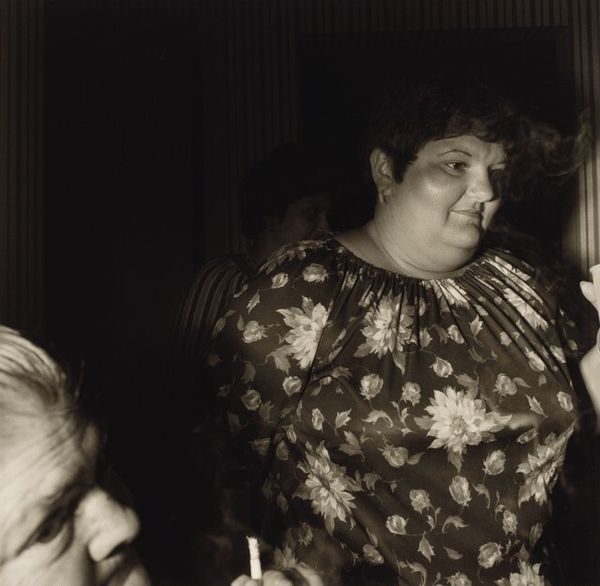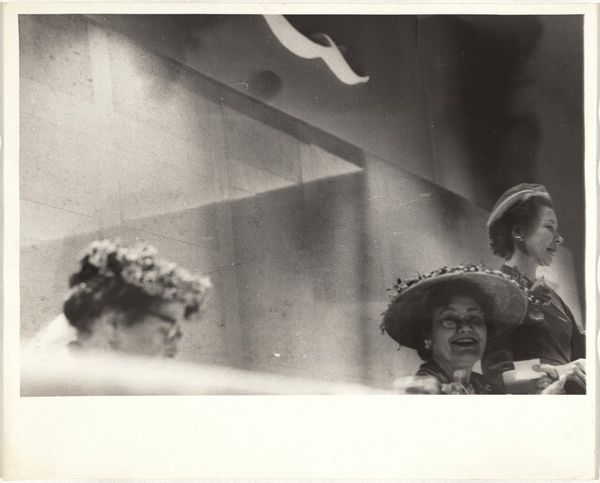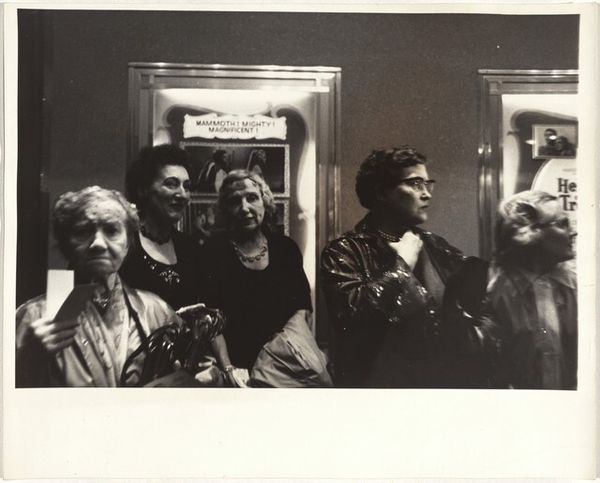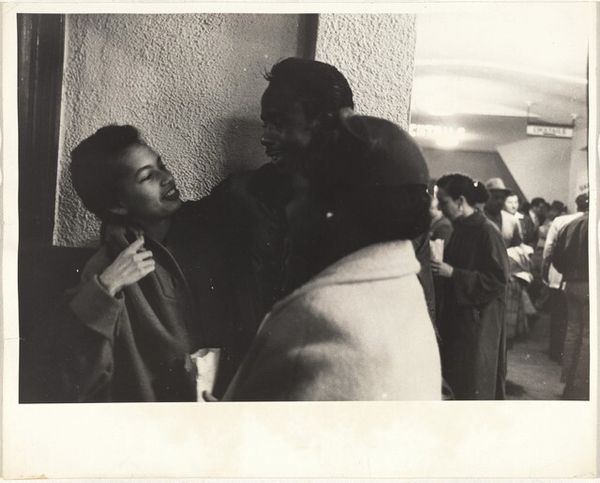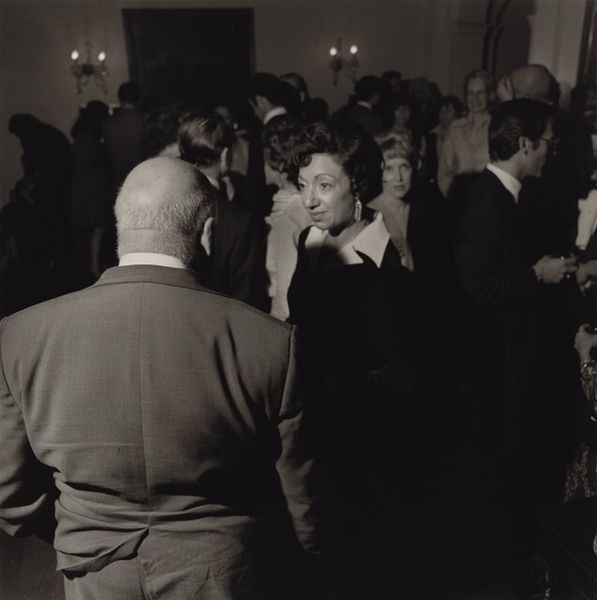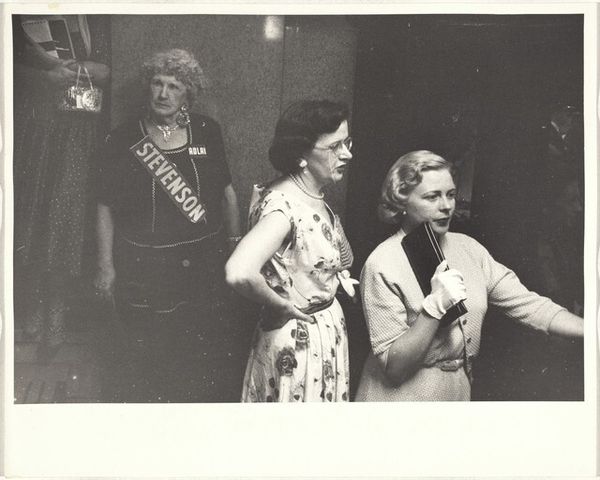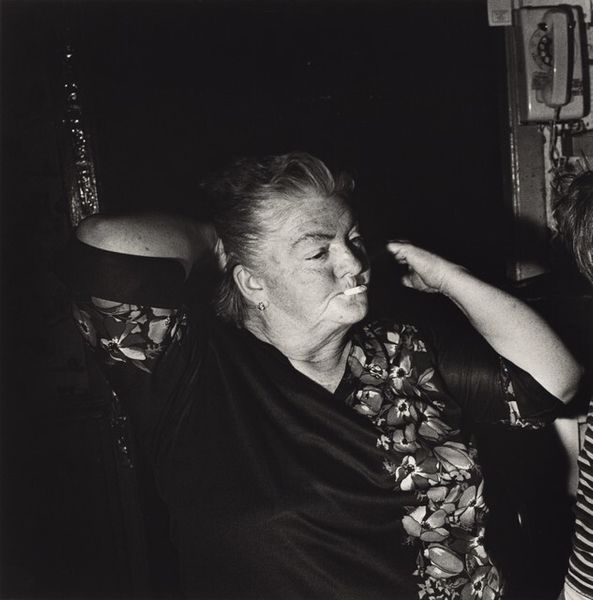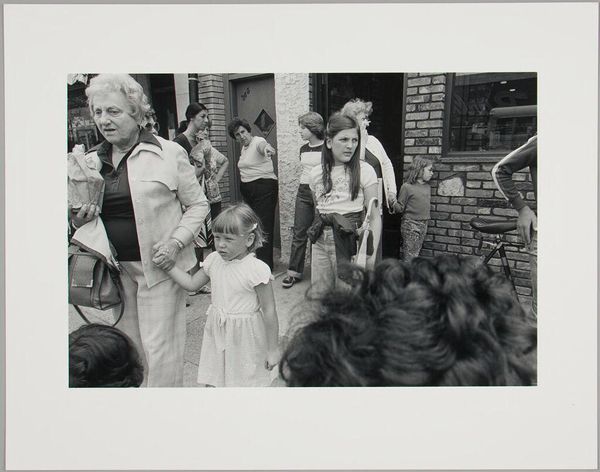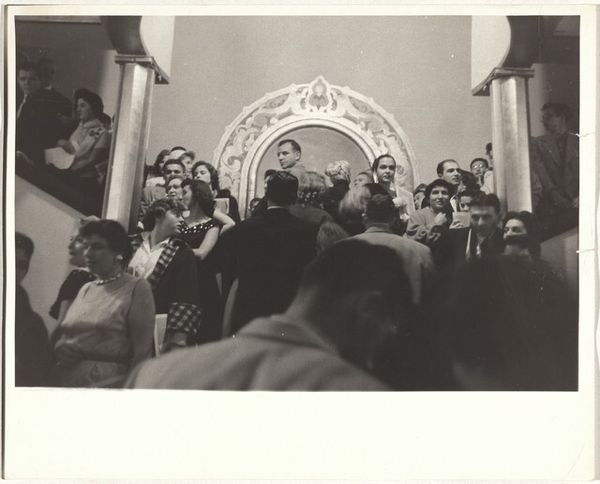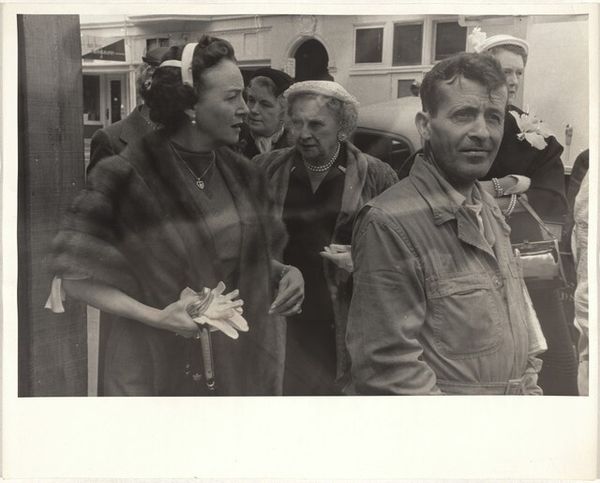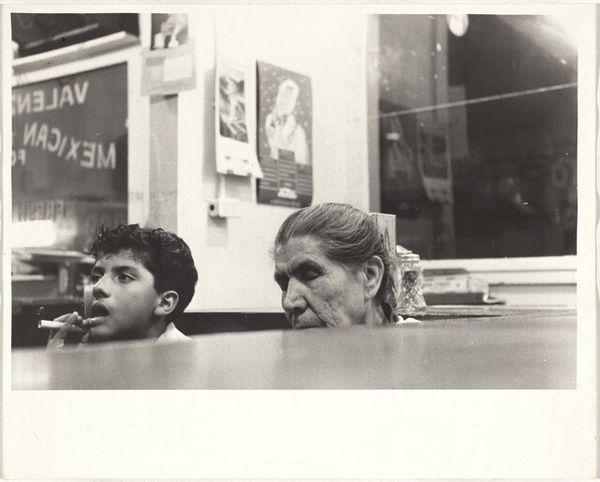
print, photography, gelatin-silver-print
#
portrait
#
print photography
# print
#
street-photography
#
photography
#
historical photography
#
gelatin-silver-print
#
modernism
Dimensions: sheet: 20.2 x 25.2 cm (7 15/16 x 9 15/16 in.)
Copyright: National Gallery of Art: CC0 1.0
Curator: Robert Frank's "Reception, convention hall--Chicago" made in 1956, a gelatin-silver print, immediately conveys a sense of restrained unease to me. What are your first thoughts? Editor: There's definitely a stillness, a heavy feeling in this gelatin print, a crowding, that points straight to material scarcity as well as societal ones. This reminds me of zinc plated goods instead of steel and so many social expectations for all those women that remain unfulfilled. The faces tell it all. Curator: Absolutely. It's crucial to consider the socio-political atmosphere of 1950s America. Frank, as an outsider, a Swiss immigrant, offered a critical perspective on American society, particularly regarding class and gender roles. This photograph captures a moment of what seems like forced conformity within a predominantly female space, a convention hall in Chicago. The title itself is very blunt and points us to the artist's intents to talk about politics. Editor: Precisely. And the materials, the gelatin-silver print process—the specific choice and its inherent limitations—affect the aesthetic and contribute to the meaning. Look at the limited tonal range here: what could’ve been more dynamic or lively gets flattened into social stagnation. How each decision impacts the visual vocabulary is interesting: those strings of pearls seem less decorative than they do imprisoning for those women at that time. Curator: That resonates powerfully. Those pearls can become shackles if you want to talk about the constraints placed upon women's identities. It is essential to remember this photo appears as part of Frank’s work "The Americans," acting as critique of the era's idealized image. These women's expressions, caught in the stark light, hint at the performativity demanded of them within a patriarchal structure. Editor: Also, consider how those repetitive gestures that are present in this image mimic mass production. From dress patterns to the way these women carry themselves as "ladylike". The uniformity that the black and white creates seems to mimic all the labor and energy used into replicating objects and in these women's behaviors too. Curator: That's a keen observation. Ultimately, this image isn't simply a snapshot of a reception. It's a poignant critique of American societal norms of the mid-20th century and an insight on woman's lives during this time. Editor: The constraints of both materiality and those placed on a whole gender at that moment made a profound mark—still palpable to this day. The choice of materials and the framing, capture a society wrestling with itself and the false reality and optimism about production and women roles and behaviors that nobody asked them if they wanted to reproduce, it's heartbreaking.
Comments
No comments
Be the first to comment and join the conversation on the ultimate creative platform.

